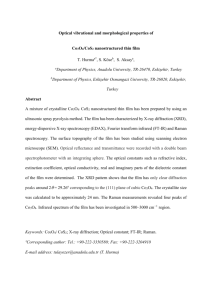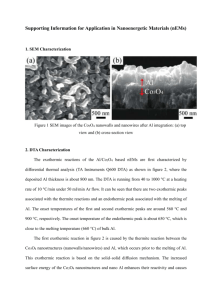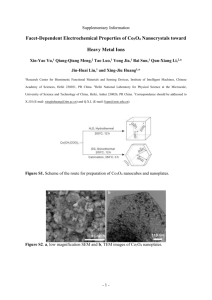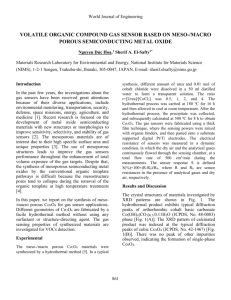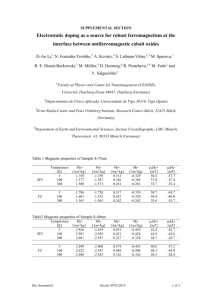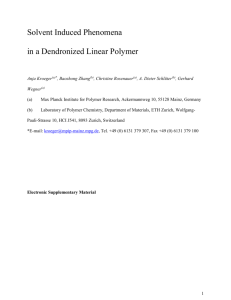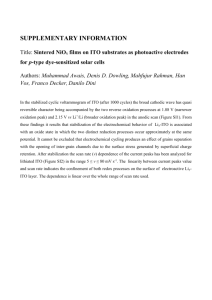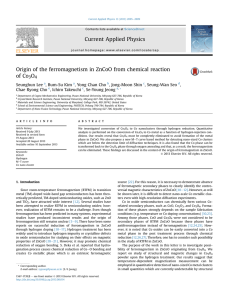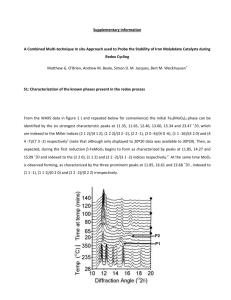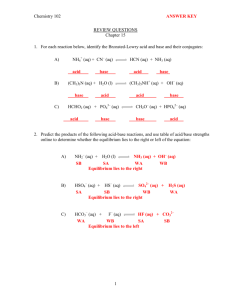1556-276X-8-36-S1
advertisement
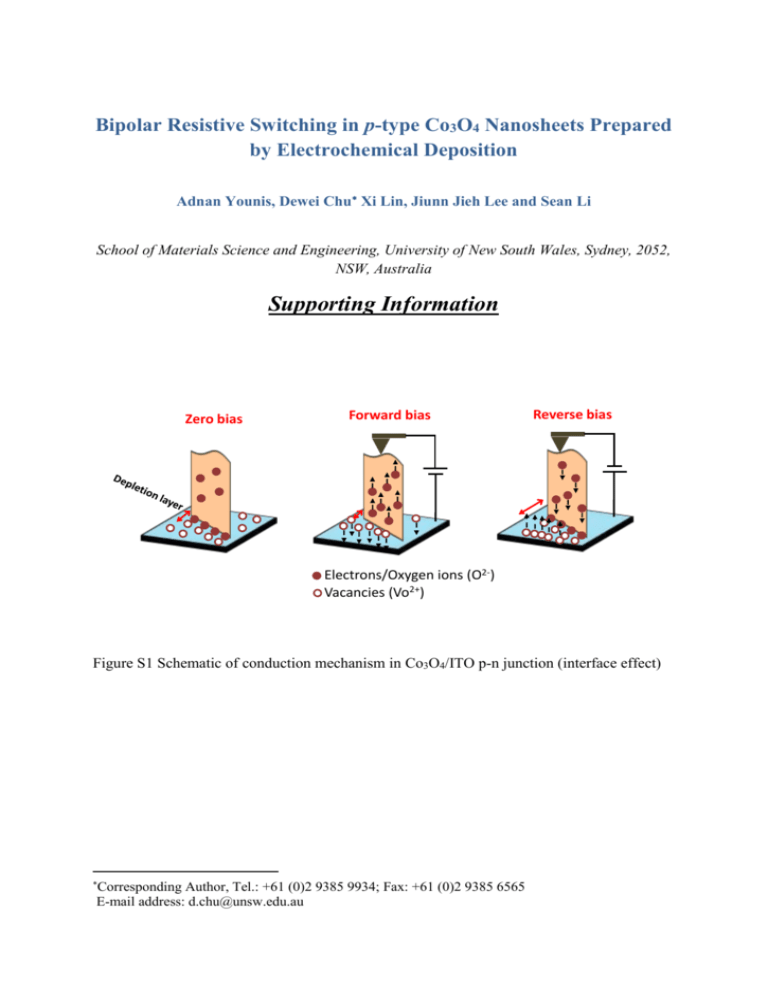
Bipolar Resistive Switching in p-type Co3O4 Nanosheets Prepared by Electrochemical Deposition Adnan Younis, Dewei Chu Xi Lin, Jiunn Jieh Lee and Sean Li School of Materials Science and Engineering, University of New South Wales, Sydney, 2052, NSW, Australia Supporting Information Zero bias Forward bias Reverse bias Electrons/Oxygen ions (O2-) Vacancies (Vo2+) Figure S1 Schematic of conduction mechanism in Co3O4/ITO p-n junction (interface effect) Corresponding Author, Tel.: +61 (0)2 9385 9934; Fax: +61 (0)2 9385 6565 E-mail address: d.chu@unsw.edu.au Current(A) 6.0x10 -3 3.0x10 -3 0.0 -3.0x10 -3 -6.0x10 -3 -2 -1 0 1 2 Applied Voltage (V) Figure S2: (a) Bipolar resistance switching I–V curves of the Co3O4/ITO device. ((inset data Resistance ( retention Au/Co3O4/ITO memory cell for (>104s)), (c) I-V curves on log scale 10 4 10 3 10 2 OFF/ON ~ 25 0 50 100 150 200 Cycles(Numbers) Figure S3: (b) Electrical pulse-induced resistance switching of the Co3O4/ITO memory cell at room temperature for 60 sec, The conductivity nature of Co3O4 film was confirmed by observing hall co-efficient, carrier mobility and sheet carrier concentration as (+0.0269 m2/C), (18.3 cm2/v-sec) and 2.319x1016 cm-2 respectively.
